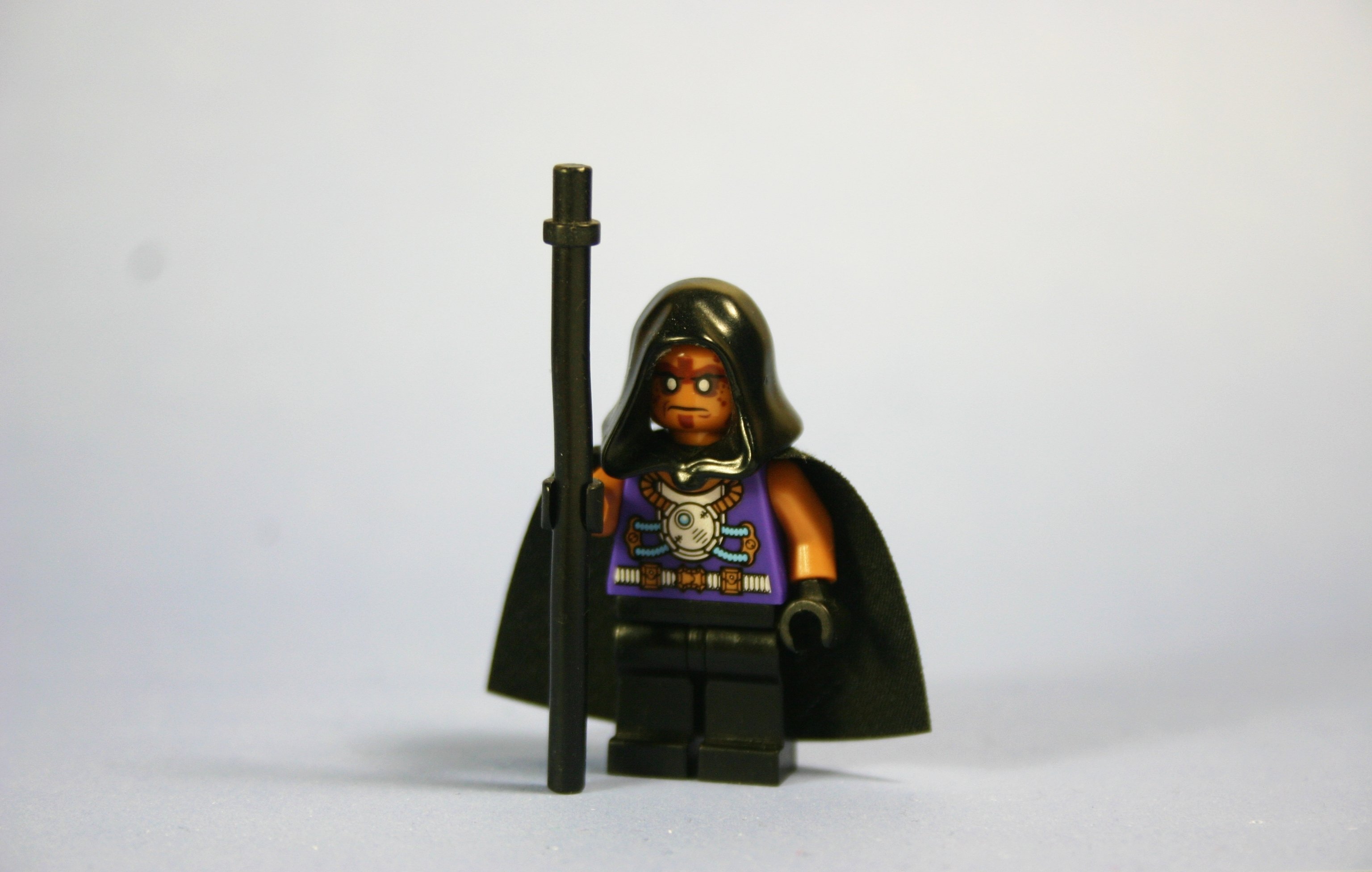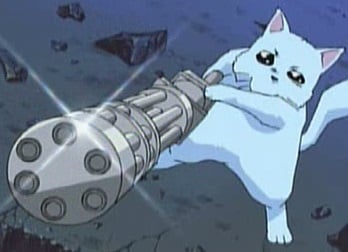Hes gonna die from carbon monoxide poisoning anyway, with his generator running in-doors
That’s why he’s not worried about stuff running out
He has more than enough supplies for the rest of his life
Or the room it’s in is vented. It appears to separate from everything else.
Laughs in GOG installers and good old physical media
Shakes hand in FOSS and reusing disconnected cables to create neighbourhood LAN.
go the Cuban way and share it all with usbs https://en.m.wikipedia.org/wiki/El_Paquete_Semanal
“This Age of Empires II session will now cone to order…”
Finally, I might be able to improve my ELO!! One can dream…
Playing chess over LORAWAN
Now i want lorawan…
Yup. This is where the physical vintage gaming collection comes into play.
My PCs don’t even have optical drives.
Ok, my bad, one of them has one. I passed it to my SO who insists on using Windows (because architecture software that’s a bitch to run in anything else) and I had forgotten about that one. My bad. But I can’t game on that one, so my point stands.
You could rip the game/movie/media off the cd and store it on your pc?
Currently, my main machine (which has no optical media), has around 12 or 14TB of storage. That machine is currently offline because we’re rebuilding our home, so I’m living off my laptop and my SO has an actual PC (although it’s kind of old, [and running Windows, per her instructions], it’s still a fairly decent machine, with 16GB of RAM, something like 2 or 4 TB of storage (not sure now), a GTX1070 (yes it’s old, but it’s still a decent card if you’re not gaming).
However It’s the only machine with an optical drive, or with a plug and play drive interface (you can plug disks on the top of the case, it’s really convenient).
External DVD drives are like $30 and external and networked storage are things too
Obligatory FreeCAD
Aside from my old PCs that have optical drives, I also have an external USB one. I think I might have a USB floppy drive kicking around somewhere, too. It’s always good to be prepared.
I really should invest in a USB drive.
You can get a mobile USB DVD R/W for 14 bucks from AliExpress and you can even get the blank DVDs for recording from there too (I checked as I was curious) and a spindle of 25 is (hilariously, IMHO) more expensive than the DVD R/W hardware.
I was putting together a replacement Mini PC for somebody with a really really old PC and just got two, one for myself, and it works fine.
That said, if you recorded CDs or DVDs back in the day the chance that they still work isn’t all that great (the data layer will age and degrades with light) but old pressed CDs/DVDs (which have an aluminium data layer) should be fine.
I wouldn’t at all recomend that as a means to store game installers (I’ve been using external HDs for a decade now, but I suspect SSDs easilly outlast HDDs in the long run since they don’t have moveable parts), but if you have some old games in a physical pressed CD or DVD they should work fine.
I’m certain you could find one.
Remember: DRM is theft.
“There was time now…”
Would have been cool if they made a modern day remake of this episode when the series came back.
Every attempt to reboot The Twilight Zone has failed miserably.
You can’t improve on perfection.
Idk the scary door isnt bad
The one right before the pandemic was good.
Zombie apocalypse is a good litmus test for ownership.
Now the best game begins: hacking.
And there is no internet to look up anything. ULTRAHARD!
God damn it. I am nothing without ChatGPT and Stackoverflow.
If you’re nothing without the suit, then you shouldn’t have it.
Any master craftsman will tell you they are nothing without their tools.
Data hoard LLMs until you can’t/aren’t allowed to.
Civilization VI will probably last me at least until the next civilization.
Civ games last forever
Especially if you play them on the Switch, since it loads so slowly.
Marathon Deity Domination victory.
I have a stalemate game I’ve been playing on and off for the past 5 years.
I have bought Civ 6 but still haven’t tried it, too busy one-more-turning Civ 5
Laughs/cries in EU4.
There was time now, I finally had time!

And then he went and broke his glasses.
It’s OK, he can still read the large print books.
Eyeballs fall out
“At least I know how to read Braille.”
Hands fall off
I would teach myself coding with books just so I could learn how to crack the DRM
Coding and cracking are two completely different things. Sure it might be easier to learn but not all coders can become crackers.
But all crackers had to learn to code
If you can learn assembly you have a chance at learning how to crack. Without knowing assembly and low level languages like c/c++ impossible.
That’s more descriptive, but I prefer the spirit of my comment, friend.
Where there’s a will there’s a way. Nothing is impossible, it depends on how far you are willing to go.
Then you realize you don’t have any compilers installed so the best you can do is batch
Time to start writing a compiler.
This is why it’s a good idea having a local mirror of your linux distro packages with at least 2-3 versions. No internet, no problem.
That’s nixos
Arch Linux is fine here with a good offline packages mirror.
Doesn’t nixos wait to actually download the packages? Sure, you could set up a derivation that depends on everything in nixpkgs, but that seems like a lot of disk space.
Just buy a 20TB HDD or two and stock up on every console game up to PS3
Yea, I doubt anyone is learning how to crack stuff these days without the internet.
If internet ever goes down, most savvy of us will make a MESH network.
I thought the point of the Internet is that in case nuclear apocalypse happened, that there will still be a reliable mode of communication?
Yes and no.
The military internet, which is built on similar principles and protocols, yes. The commercial internet? Ehhh. Not so much.
Most internet interconnects are consolidated into internet exchanges, usually in, or near, datacenters. I live in southern Ontario, pretty much every local ISP routes the majority of their traffic, if not all of it, through TorIX in Toronto. There’s a datacenter there, or more accurately several, which are cross connected into or through TorIX. Many of the local ISPs do not have redundancy with another IX or datacenter. One notable exception is Bell Canada, who has a strong, and broad transportation network of their own, which connects to TorIX and the IX in Montreal, among others. They’re probably the best set up in their distribution layers from what I can tell.
Most ISPs can suffer the loss of one major upstream network provider loss, but not all of them in the IX. Aka, if the datacenter/IX falls, the entire network goes offline.
Take for example a local third party provider of teksavvy. And to be clear, I’m making a lot of wild speculation about teksavvy here, and reality may be very different, but I’m just using them as an example. Normally, small ISPs like teksavvy do one of two things, they either resell DIA connections (direct internet access), which is basically just buying another providers access from them. Aka, you buy teksavvy, but the line you’re connected to is from Bell, your internet and your internet IP is provided by Bell, and you pay teksavvy who pays Bell. You might as well be on Bell, but since teksavvy is buying in bulk, you can usually get service from them cheaper than from Bell. Functionally it’s the same, so there’s a null sum here. The alternative is that teksavvy gets a wholesale connection to you, where Bell (or another “last mile” ISP) provides the connection from your premise to teksavvy, usually through a local IX, your connection still goes into the datacenter, but rather than go from the bell line, through Bell’s gear direct to the internet, it goes from Bell’s wholesale line, to teksavvy gear in the datacenter, then gets rerouted through to the internet from there. All within the DC/IX.
The IX crossconnects all providers in the DC, which would be companies like Meta, Google, Netflix, the company formerly known as Twitter, etc, and also to other ISPs, so you can directly connect to your friend down the road on Rogers without having your traffic go further than it has to. The IX is where ISPs, providers, datacenters and all other connections meet. A nearby nuclear blast that destroys the DC/IX in your area, would very likely disrupt all communication for the area served by ISP connections routed through that IX.
In rare cases (I believe Bell is set up this way), the ISP will cross link it’s distribution centers, which are usually buildings in your neighborhood with the company’s logo, but no customer facing area, to eachother all the way across an area into the next area where the next IX is. So you’re functionally connected to two IX locations or more. The providers distribution network isn’t as fast as the IX to IX direct fiber routes, which usually have fewer devices to go through, but it would work at very limited capacity.
On the public internet, there is a mesh between IX’s, but the location of the IX isn’t hidden. Any individual connection to the internet is usually only connected to a single IX. Most of the distribution between you and the IX is not redundant.
Then compare with what I believe would be a typical example of a military “internet” (again, I’m just speculating based on highly redundant data principles, nothing more): each location, like a military base, airfield, government complex, etc. Would be connected to multiple other locations in a mesh. In addition, they would have backup links likely through satellite or microwave relay links. So if all of the locations that a base is connected to go down, they can use satellite as a final option. Imagine nine such sites in a standard 3x3 grid. Each is connected to no less than 3 neighbors, and the central base is connected to all eight of the others. The central base is destroyed (or otherwise has their datacom disabled). All outlying bases still have at least two links to neighbors. Communication continues. Another base is destroyed, say, the north-East location. All nodes can connect to eachother without issue, but the north and east bases are down to one link plus backup. The South-Eastern location goes down. The rest are unaffected except the eastern base which now needs to rely on satellite backup, but they can communicate. Etc.
As you can hopefully see, the bases all have multiple redundant links and unless they are destroyed or otherwise have their datacom disabled, they can remain in communication with the other bases.
With the internet, that’s usually how IX’s are interconnected, but anything on a single IX, is basically fucked if that IX no longer operates. We’re all nodes of an IX. An intelligent adversary would target any known centers of telecommunications, and we’ve made it easy for them my centralizing all of the communications for a given geography into centralized locations which are conveniently published for anyone to see. There are lists of IX locations on the internet for anyone to stare at, including what ISP companies are connected. With a single well-placed, high yield (not even nuclear) bomb or ICBM, all commercial communication systems can be neutralized for an area of attack. They wouldn’t even need to destroy a full city block to accomplish it.
Sure, bombing, say TorIX, wouldn’t stop someone in, say, Nova Scotia, from chatting to someone in British Columbia, but pretty much everyone in Southern Ontario would be disconnected in an instant. Unable to tweet about the bomb that just went off in downtown Toronto (I believe the IX there is next to Union station, at 151 Front St).
The reason it’s done this way is because of money. It’s far cheaper to centralize access to an IX, then connect the IX’s together. The alternative is to string fiber between datacenter buildings for different companies at different addresses. Getting fiber between geographically different locations is costly, so the companies at the DC/IX all pay a small portion of the fees, either directly or indirectly, to have each IX connected to the others. That cost is shared and the various providers can have access to a limited number of fiber strands that run between locations. Even a handful (like 5) strands can net about 1Tbps of bandwidth or more depending on how it’s used. The planning and deployment of such connections can easily run into the millions of dollars. Sometimes significantly more. Sharing in that cost is a good business move, even if you’re “helping” your competition by doing so, because they also are getting a benefit from it.
Taking it back to the OP: the blast observed appears to be in a city, where it is likely an IX would be situated, most likely the one that your shelter is connected to. Cellular won’t help since a lot of that infrastructure relies on microwave relays back to a head node, usually on the cities outskirts, which then transfers the data to a high-speed fiber line to… You guessed it, the IX.
The internet isn’t designed to be resilient to war. We will lose all datacom if war breaks out, with certainty.
Military networks, though similar in design, have vastly more redundancy, the likes of which, we, the people, do not, and will likely never, have access to.
That was extremely detailed. Thanks. Now I know how to take out the internet.
Yes, but don’t forget wireless p2p mesh that anyone can setup. There is also 4g/5g cellular and as you mentioned satellites. So even without internet many people can still interconnect. This of course if there is no signal jamming or emp blast.
P2p mesh is great except there’s no DNS, so now either someone needs to host that, making them a critical node. Either that or every needs to start memorizing IP addresses. Using discovery through broadcast would easily create so much traffic that you’d run out of bandwidth on a wireless mesh.
Everyone seems to think that a wireless mesh is some kind of golden bullet, but it’s really not. Putting that many people on a mesh generates a lot of broadcasts, which by nature go to everyone on the net. Having broadcasts rebroadcast by mesh stations will double the traffic load each time it’s done, so beyond 4-5 mesh points, and a few dozen clients, the broadcasts start to take over the available bandwidth.
Rebuilding, basically means that someone needs to set up an IX, and connect their neighbors to them in an ISP-like configuration. One person basically needs to become the ISP/IX for a neighborhood and connect to others doing the same for their neighborhood.
At least one of the IX owners would need to know enough about networking to set up routing protocols and run an IP address management system to ensure nobody overlaps anyone else, and configure routing protocols for all the IX locations so they can communicate to eachother.
Then there’s the problem of services. The global DNS system is down, so you need to make a new one. Services you expect on the internet are gone, so those need to be rebuilt, which means someone needs to basically become a datacenter to run the servers to generate those services.
I would be the obvious candidate to do this in my area. I know of a handful of people who could do the same in their area, and only one such person lives remotely close to me (about an hour or so drive away). I have my own homelab servers, and more networking equipment than I can shake my fist at. I’d go and raid the local ISP distribution building to pillage some fiber delivery equipment and build out a gigabit+ speed passive optical network from my basement as the ISP/IX/DC. Finding outdoor rated fiber lines and whatnot to run any relevant connections would be important.
Then set up a wireless point to point link to any other nearby community networks.
Thank you for your detailed comments.
A couple of years ago, I was working at a grocery store picking orders using a web app. The store had enterprise-class Internet service with a provider that had two power utility feeds from two different electrical substations a couple miles apart, for reliability.
One day, though, our service went down. One of the power substations had exploded. Shortly, thereafter, the increased load on the grid caused the other substation to explode, too. The cascading electrical failure took out the ISP’s backup generator.
That didn’t even take nuclear war, just a faulty transformer. (ETA: The disaster preparedness lesson is to look for hidden dependencies between your backups.)
Can you please elaborate on the technical details of the failures? What was the hidden dependency?
The ISP had redundant electrical grid connections for reliability, but the two connections were not isolated at the electrical utility level. A failure in one substation cascaded to the other substation. The operation of one electrical feed depended on the operation of the other, so they were effectively only a single feed.
But I don’t understand why them being connected makes one dependent on the other, unless half of the supply alone can’t support the workload. What is the “electrical utility level”
Both substations feed in parallel. Demand exceeded the capacity of station 2 to supply demand and it tripped the cutout. Only rural connections are radial. Electrical utility starts at the point of demarcation to the generators that make the power.
The “utility level” is Madison Gas & Electric’s infrastructure. Our ISP had two independent electrical service connections based on the idea that if one went down, they’d still get power sufficient to run their data center from the other. That would be the case if each connection reached all the way to the generating station completely independently. However, the two substations to which the ISP was connected were linked in such a way that a catastrophic failure of one caused failure of the other, so it got no electrical power.
Nuclear explosions emit massive EMPs. enough to kill a lot of electronics
Could always go back to the old BBS routine. Dunno if itd work with cell service but since most plans have unlimited calling, a BBS could help a lot of people connect at least at a basic level
Two tin cans connected by a string.
Like Cuba?
Imagine thinking you could get a wireless gaming controller and wireless headphones to work with windows xp
For when that happens, we’ll have Open Transport Tycoon.
The first frame is such a funny picture
in sight of the mushroom cloud? I have cans of soda fuck off I dont care
There’s a fun 1980s short film called Smoke 'Em If You Got 'Em about a big punk rock party in a nuclear bunker after the apocalypse. The first frame reminds me of the ending of the movie.
The fact that the comment section wouldn’t load for me for a while just for this post 🤌
MFW I start a single player game

















